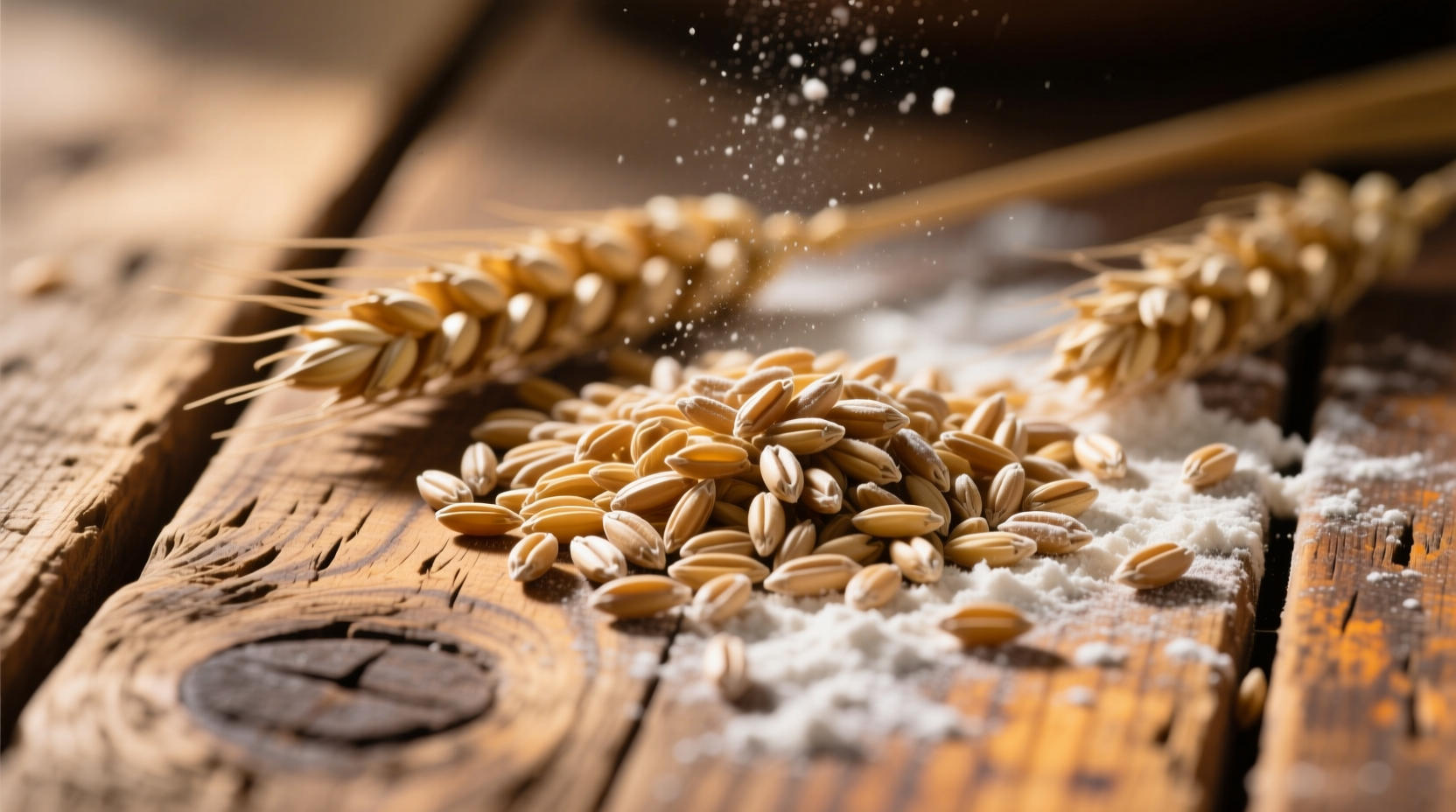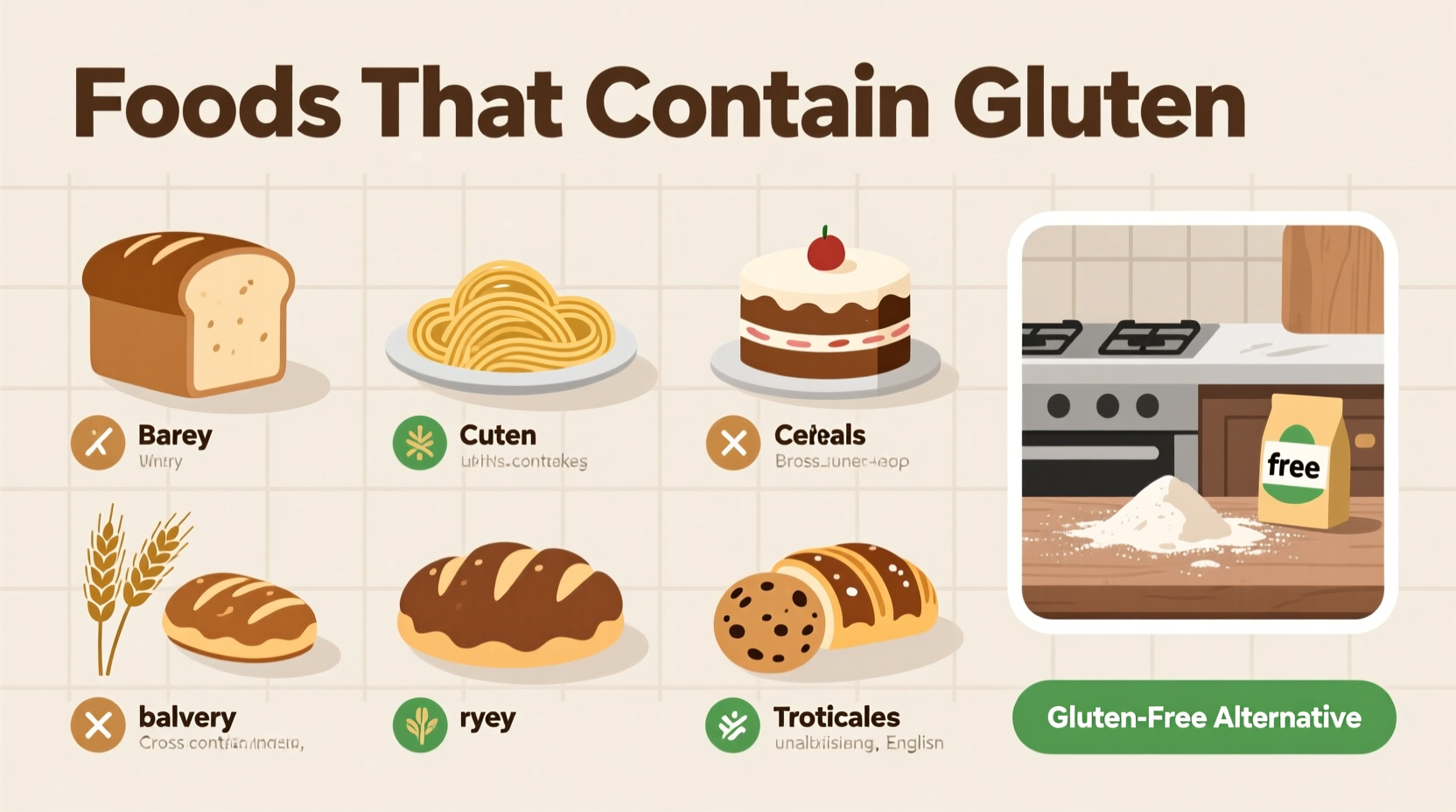If you're asking what food has gluten, the immediate answer is: gluten is primarily found in wheat, barley, rye, and their derivatives. Common gluten-containing foods include bread, pasta, baked goods, beer, and many processed foods that use wheat-based ingredients. Understanding which foods contain gluten is essential for those with celiac disease, gluten sensitivity, or wheat allergies.
Discovering which foods contain gluten can be life-changing if you're managing celiac disease or gluten sensitivity. This comprehensive guide provides clear, science-backed information about gluten sources so you can make informed dietary choices without feeling overwhelmed.
Understanding Gluten: More Than Just a Protein
Gluten isn't just one substance—it's a family of proteins found in certain grains that gives dough its elastic texture. The two main proteins, gliadin and glutenin, trigger immune responses in people with celiac disease. According to the Celiac Disease Foundation, approximately 1% of the global population has celiac disease, while non-celiac gluten sensitivity affects up to 13% of people.
Everyday Foods That Always Contain Gluten
These staple foods consistently contain gluten because they're made from wheat, barley, or rye:
| Food Category | Specific Examples | Gluten Source |
|---|---|---|
| Bread products | Sandwich bread, rolls, bagels, naan, pitas | Wheat flour |
| Pasta & noodles | Wheat pasta, udon, ramen, soba (unless 100% buckwheat) | Wheat, barley |
| Baked goods | Cakes, cookies, muffins, pies, pastries | Wheat flour |
| Breakfast items | Most cereals, pancakes, waffles, crepes | Wheat, barley malt |
| Grains | Bulgur, farro, spelt, kamut, triticale | Wheat varieties |
Surprising Sources of Hidden Gluten
Many processed foods contain gluten as a thickener, stabilizer, or flavor enhancer. The U.S. Food and Drug Administration requires gluten-containing ingredients to be clearly labeled, but these items often catch people off guard:
- Sauces and gravies: Soy sauce, teriyaki sauce, salad dressings, and meat gravies often use wheat as a thickener
- Processed meats: Deli meats, sausages, and meat substitutes frequently contain gluten fillers
- Snack foods: Many flavored chips, pretzels, and crackers contain wheat
- Alcoholic beverages: Beer, ale, lager, and malt beverages contain barley
- Seasonings: Some spice blends and seasoning mixes contain wheat starch

How to Read Labels for Gluten: A Practical Guide
Since the FDA's gluten-free labeling rule took effect in 2014, products labeled "gluten-free" must contain less than 20 parts per million (ppm) of gluten—the lowest level that can be consistently detected in foods. When checking labels, watch for these red flags:
- Obvious gluten sources: Wheat, barley, rye, malt, brewer's yeast
- Less obvious terms: Hydrolyzed vegetable protein (if derived from wheat), modified food starch (if wheat-based), natural flavorings (may contain gluten)
- Certifications to trust: Look for the Gluten-Free Certification Organization (GFCO) seal or similar third-party verification
The National Institutes of Health emphasizes that "gluten-free" labeling has significantly improved food safety for those with celiac disease, reducing accidental exposure by approximately 30% since implementation.
Safe Gluten-Free Alternatives for Common Foods
Replacing gluten-containing foods doesn't mean sacrificing texture or flavor. Here are reliable substitutions that maintain the eating experience:
- Bread alternatives: Look for products made with rice flour, almond flour, or cassava flour
- Pasta swaps: Try brown rice pasta, quinoa pasta, or chickpea-based noodles
- Thickening agents: Use cornstarch, arrowroot, or tapioca starch instead of wheat flour
- Breakfast options: Choose certified gluten-free oats, corn tortillas, or sweet potato toast
- Beer alternatives: Seek out gluten-free beers made from sorghum, millet, or buckwheat
Avoiding Cross-Contamination: The Hidden Danger
Even when you've identified gluten-free foods, cross-contamination remains a serious concern. The Celiac Disease Foundation reports that 25% of people with celiac disease experience symptoms from cross-contamination alone. Key prevention strategies include:
- Using separate toasters for gluten-free bread
- Cleaning cooking surfaces thoroughly before preparing gluten-free meals
- Storing gluten-free foods separately in the pantry and refrigerator
- Using dedicated cooking utensils for gluten-free preparation
- Being cautious when dining out—ask about dedicated fryers and preparation areas
Special Considerations for Different Dietary Needs
While gluten-free diets are essential for those with celiac disease, the approach differs based on individual needs:
- Celiac disease: Requires strict, lifelong elimination of all gluten sources (approximately 3 million Americans affected)
- Non-celiac gluten sensitivity: May tolerate small amounts of gluten but typically benefits from significant reduction
- Wheat allergy: Only requires avoiding wheat, not necessarily other gluten-containing grains
- Gluten ataxia: Neurological condition requiring strict gluten avoidance regardless of gastrointestinal symptoms
According to a 2023 Mayo Clinic study, properly managed gluten-free diets lead to complete intestinal healing in 65-90% of celiac patients within 2 years, compared to only 8% who continue consuming gluten.
Practical Tips for Navigating Social Situations
Eating gluten-free doesn't have to mean missing out on social events. Try these strategies:
- Communicate your needs clearly but simply: "I have a medical condition that requires me to avoid gluten"
- Offer to bring a gluten-free dish to share at gatherings
- Research restaurant menus in advance using apps like Find Me Gluten Free
- Keep emergency gluten-free snacks in your bag or car
- Learn basic phrases in other languages for "I cannot eat gluten" when traveling











 浙公网安备
33010002000092号
浙公网安备
33010002000092号 浙B2-20120091-4
浙B2-20120091-4